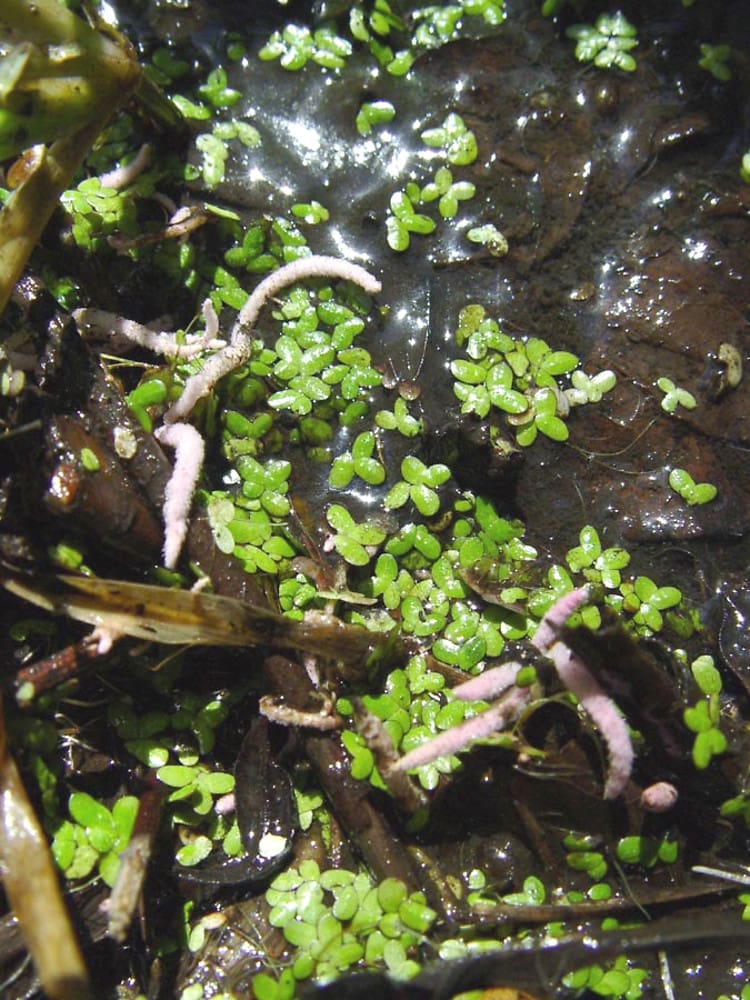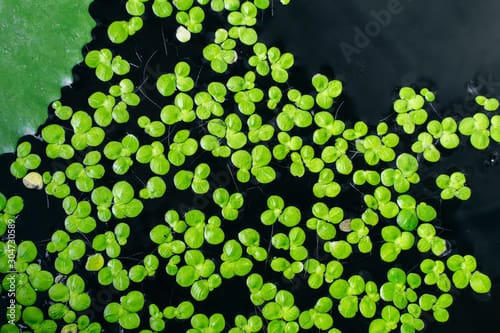Emerging from the realm of aquatic botany is the relatively unfamiliar Lemna perpusilla, a species of aquatic plant commonly referred to as a ‘weed’. This article will meticulously unravel the complexities of Lemna perpusilla, accentuating its key characteristics, habitat and the critical role it plays within its ecosystem. You’ll navigate the fascinating scientific research available on this distinctive water-dweller and gain a thorough understanding of the importance of such species within their habitats and to the wider ecological network. It will also discuss the challenges and the successes associated with managing the proliferation of Lemna perpusilla in various water bodies. Dive into the world of aquatic botany as you explore the unchartered entity that is the Lemna perpusilla.

Basic Description of Lemna Perpusilla
One of the smallest flowering plants found on Earth is Lemna perpusilla, commonly known to the masses as Lesser duckweed. This tiny aquatic plant is unmatched in its vitality and ability to adapt due to its characteristics and features, which will be subject to intense analysis in the following sections.
Visually Identifying Lemna Perpusilla
Upon first glance, your glossed over perception might mistake Lemna perpusilla for a green layer of scum. However, closer inspection reveals countless individual plants. Each one comprises one or two leaves with a distinctive root descending from each foliage’s central nerve. The vivacity of this floating aquatic organism is truly hidden in the detail of its structure.
Size and Shape of Lemna Perpusilla
Lemna perpusilla is incredibly minute, measuring between 0.5 to 1.5mm in diameter. Each green circular-topped leaf, or frond, is flat and ovate-elliptical in shape. The individual plants typically float together in groups making identification of single plants a bit more challenging.
Color and Texture of Lemna Perpusilla
The plant showcases a distinctive bright green color, sometimes bordering a yellowish tint depending on nutritional and light conditions. The surface of the plant is smooth while being lightly ribbed, adding an extra layer to the texture. The undersurface has a veiny structure, underlining the complex intricacies of this minute plant.
Taxonomical Classification of Lemna Perpusilla
Kingdom and Phylum of Lemna Perpusilla
As might be assumed from its green color and photosynthetic nature, Lemna perpusilla belongs to the Plantae Kingdom. Furthermore, it falls under the Angiosperms phylum, marking it as a flowering plant.
Class and Order of Lemna Perpusilla
The plant is part of the Monocots class, named for its single embryonic leaf or cotyledon. Also, it falls under the order of Alismatales. The order includes several other water and marsh plants.
Family, Genus, and Species of Lemna Perpusilla
The family of this plant is Araceae, the same family as both philodendrons and the common “Peace Lily”. The genus it belongs to is Lemna, and the species name, as might be deduced, is perpusilla.

Habitat and Distribution of Lemna Perpusilla
Natural Geographical Distribution of Lemna Perpusilla
Lemna perpusilla is native to most parts of North America, which subject the plant to a wide variety of ecological conditions. However, it can be found elsewhere, particularly in temperate and tropical freshwater habitats around the world.
Preferred Habitat of Lemna Perpusilla
The aquatic plant prefers stagnant or slow-moving freshwaters like ponds, canals, and ditches. It also has a propensity for shallow, nutrient-rich waters.
Environmental Conditions Essential for Lemna Perpusilla
While it is a versatile plant, Lemna perpusilla thrives with ample sunlight and warmer temperatures. The plant also requires calm waters to avoid being washed ashore and desiccating.
Growth and Reproduction Cycle of Lemna Perpusilla
Understanding the Growth Rate of Lemna Perpusilla
The species is known for its rapid growth rate; under ideal conditions, it can double its population size in as little as 48 hours.
Seasons favorable for The Growth of Lemna Perpusilla
It grows most robustly during the warm summer months, but depending on regional climates and local weather patterns, there can be multiple peaks of growth.
Reproduction Methods of Lemna Perpusilla
The species reproduce both sexually, through rare flowering and seed production, and asexually, by budding new daughter fronds from the mother frond’s base.

Ecological Role of Lemna Perpusilla
Role of Lemna Perpusilla in Aquatic Ecosystems
Lemna perpusilla plays a significant role within aquatic ecosystems. It has a direct influence on nutrient and sunlight availability and can also suppress algal blooms. By doing so, it contributes heavily to diversity levels within aquatic environments.
Interactions with Other Species
Its role in the food web includes serving as food for ducks and other waterbirds. It also provides shelter for small aquatic invertebrates. Thus, it contributes to diverse food chains within the local ecology.
Impact on Nutrient Dynamics in Water Bodies
Lemna perpusilla, similar to other aquatic plants, has a vital role in assimilating excess nutrients in water bodies and preventing eutrophication.
Scientific Studies Involving Lemna Perpusilla
Use of Lemna Perpusilla in Scientific Research
Due to its fast growth and easy cultivation, this species can serve as an excellent model organism for botanical and ecological research, particularly for investigating eutrophication as well as nutrient uptake and cycling.
Important Discoveries Involving Lemna Perpusilla
The plant has also been vital for phytoremediation research due to its ability to uptake and remove toxins from water bodies.
Current Research Trends Surrounding Lemna Perpusilla
Lemna perpusilla is currently being studied for its potential role in the remediation of polluted waters, particularly in removing excess nutrients and potential toxicants.
Potential Uses of Lemna Perpusilla
Lemna Perpusilla in Wastewater Treatment
Lemna perpusilla has shown promise in the wastewater treatment industry due to its ability to rapidly uptake and assimilate excess nutrients.
Use of Lemna Perpusilla in Herbal Medicine
While it is not widely recognized as a substance of herbal medicine, experimental research suggests a potential for utilising Lemna perpusilla in this manner.
Agricultural Uses of Lemna Perpusilla
Its rapid growth and high protein content have raised interest in using it for animal feed, particularly for fish and poultry.
Issues Associated with Lemna Perpusilla
Impact of Lemna Perpusilla Overgrowth on Water Bodies
The unchecked growth of Lemna perpusilla can form dense mats that cover entire water surfaces, resulting in imbalances within the local ecosystem and impeding other plants and aquatic species.
Controlling and Eradicating Lemna Perpusilla
Control efforts are complicated due to its high reproductive rates. Physical removal proves most practical on a small scale, while chemical and biological control methods hold potential for larger infestations.
Potential Threats to Biodiversity and Native Species
Excessive Lemna perpusilla growth can pose significant threats to local biodiversity and native species through competition for sunlight and nutrients and altering local habitats.

Comparing Lemna Perpusilla with Other Aquatic Weeds
Distinct Features of Lemna Perpusilla Compared to Other Aquatic Weeds
Compared to other aquatic weeds, Lemna perpusilla stands apart in its floating habit, extremely rapid growth rate, small size, and potential roles in wastewater treatment.
Similarities with Other Aquatic Weeds
Like many aquatic weeds, however, this plant’s unchecked growth can lead to a number of ecological issues, including habitat loss, species displacement, and oxygen depletion.
Why Lemna Perpusilla Poses a Unique Challenge
Lemna perpusilla poses a unique challenge due to its astonishing rapidity in proliferation, small size, and the potential to quickly alter aquatic environments.
Future Perspectives on Lemna Perpusilla
Climate Change and its Potential Impact on Lemna Perpusilla
It’s predicted that conditions of warmer temperatures and nutrient pollution exacerbated by climate change could potentially lead to an increase in the growth and proliferation of Lemna perpusilla.
Evolving Use of Lemna Perpusilla for Scientific and Commercial Purposes
Scientific interest will likely continue to focus on the plant’s wastewater treatment potential and possible uses in biofuel production, among other applications.
Anticipated Changes to the Ecological Role of Lemna Perpusilla
Given increasing global environmental changes, the ecological role of Lemna perpusilla is expected to continue evolving in marked and unanticipated ways, possibly exacerbating its challenging nature.
